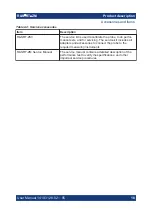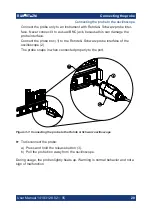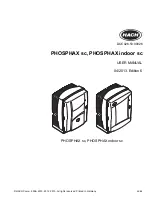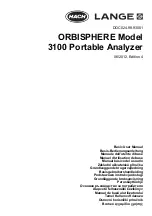
Connecting the probe
R&S
®
RT
‑
ZM
19
User Manual 1419.3128.02 ─ 05
3
Connecting the probe
3.1
Handling the probe
The R&S
RT-ZM can withstand a moderate amount of physical and electrical
stress. To avoid damage, treat the probe with care:
●
Handle the probe by the probe amplifier or probe box.
●
Prevent the probe from receiving mechanical shock.
●
Avoid strain on the probe cable and route it carefully.
●
Do not spill liquids on the probe.
Preventing electrostatic discharge (ESD)
Electrostatic discharge is most likely to occur when you connect or disconnect a
DUT.
►
NOTICE!
Electrostatic discharge can damage the electronic components of
the product and the device under test (DUT).
Ground yourself to prevent electrostatic discharge damage:
a) Use a wrist strap and cord to connect yourself to ground.
b) Use a conductive floor mat and heel strap combination.
Discharge cables and probe clips before you connect them.
3.2
Connecting the probe to the oscilloscope
The probe is designed for usage with oscilloscopes that have a Rohde
&
Schwarz
probe interface. Supported Rohde
&
Schwarz oscilloscopes are listed in the pro-
be's data sheet.
1. If your DUT is floating and not grounded, connect the DUT ground to the oscil-
loscope ground before connecting any probe tip module to your DUT.
2.
NOTICE!
Risk of damaging the probe.
Connecting the probe to the oscilloscope
















































